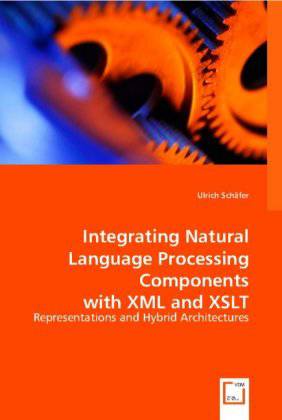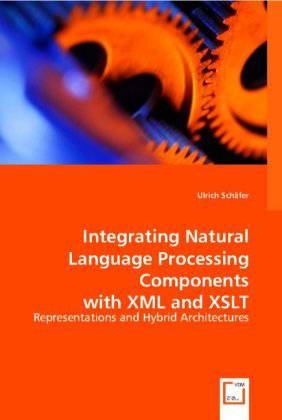
Je cadeautjes zeker op tijd in huis hebben voor de feestdagen? Kom langs in onze winkels en vind het perfecte geschenk!
- Afhalen na 1 uur in een winkel met voorraad
- Gratis thuislevering in België vanaf € 30
- Ruim aanbod met 7 miljoen producten
Je cadeautjes zeker op tijd in huis hebben voor de feestdagen? Kom langs in onze winkels en vind het perfecte geschenk!
- Afhalen na 1 uur in een winkel met voorraad
- Gratis thuislevering in België vanaf € 30
- Ruim aanbod met 7 miljoen producten
Zoeken
Integrating Natural Language Processing Components with XML and XSLT
Representations and Hybrid Architectures
Ulrich Schäfer
Paperback | Engels
€ 77,95
+ 155 punten
Omschrijving
This book describes novel software architectures for the integration of deep and shallow natural language processing (NLP) components in language technology. The generic markup language XML and the XML transformation language XSLT are used for flexible combination of linguistic markup produced by multiple NLP components. Shallow NLP components such as tokenizers, part-of-speech taggers, named entity recognizers and shallow parsers are combined with a deep parser, operating grammars written in the spirit of the Head-Driven Phrase Structure Grammar (HPSG) theory. The integration paradigm enables synergy leading to more robust deep parsing with increased coverage. It also constitutes a division of labor: the deep grammar models general, correct language use, while shallow systems are responsible for domain-specific extensions. Applications are presented in question answering, information extraction, natural language understanding, ontologies and the Semantic Web. The book addresses to software engineers, computational linguists and language technology engineers.
Specificaties
Betrokkenen
- Auteur(s):
- Uitgeverij:
Inhoud
- Aantal bladzijden:
- 356
- Taal:
- Engels
Eigenschappen
- Productcode (EAN):
- 9783836490276
- Uitvoering:
- Paperback
- Afmetingen:
- 150 mm x 21 mm
- Gewicht:
- 478 g

Alleen bij Standaard Boekhandel
+ 155 punten op je klantenkaart van Standaard Boekhandel
Beoordelingen
We publiceren alleen reviews die voldoen aan de voorwaarden voor reviews. Bekijk onze voorwaarden voor reviews.









